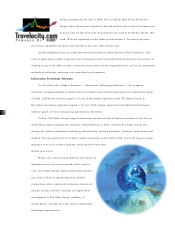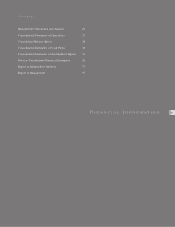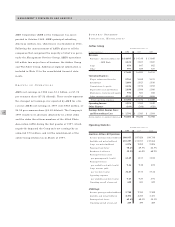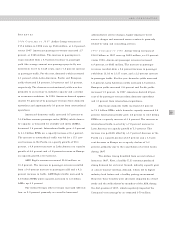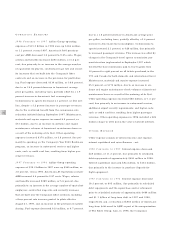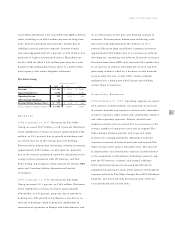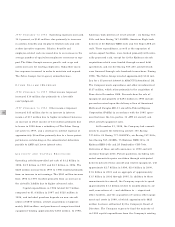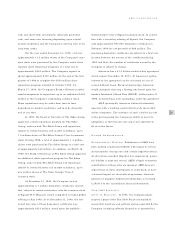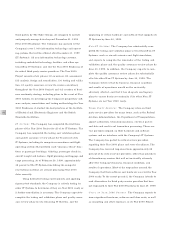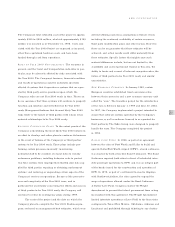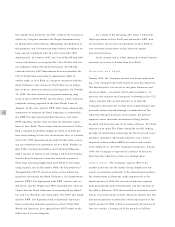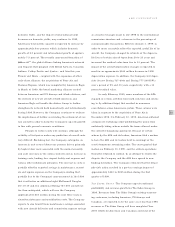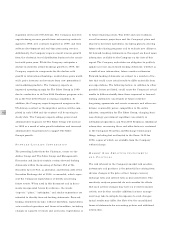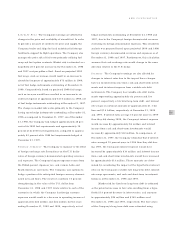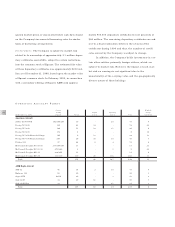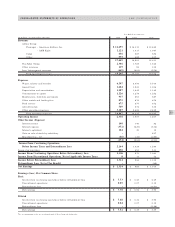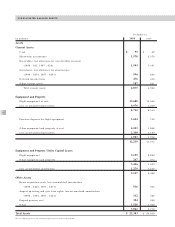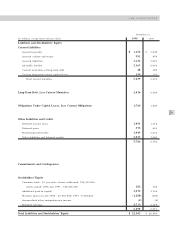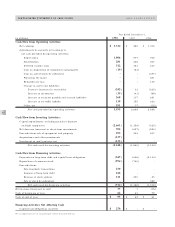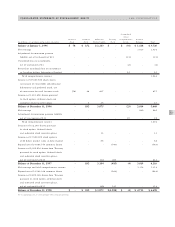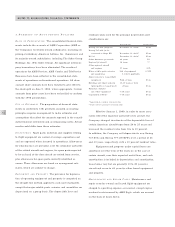American Airlines 1998 Annual Report Download - page 34
Download and view the complete annual report
Please find page 34 of the 1998 American Airlines annual report below. You can navigate through the pages in the report by either clicking on the pages listed below, or by using the keyword search tool below to find specific information within the annual report.
32
tion outside that perimeter. In 1997, without the consent of
either city, Congress amended the Wright Amendment by
(i) adding three states (Kansas, Mississippi and Alabama) to
the perimeter and (ii) removing some federal restrictions on
large aircraft configured with 56 seats or less (the 1997
Amendment). In October 1997, the City of Fort Worth filed
suit in state district court against the City of Dallas and oth-
ers seeking to enforce the Bond Ordinance. Fort Worth
contends that the 1997 Amendment does not preclude the
City of Dallas from exercising its proprietary rights to
restrict traffic at Love Field in a manner consistent with the
Bond Ordinance and, moreover, that Dallas has an obliga-
tion to do so. American joined in this litigation. On October
15, 1998, the state district court granted summary judg-
ment in favor of Fort Worth and American, which summary
judgment is being appealed to the Fort Worth Court of
Appeals. In the same lawsuit, DFW filed claims alleging that
irrespective of whether the Bond Ordinance is enforceable,
the DFW Use Agreement prohibits American and other
DFW signatory airlines from moving any interstate opera-
tions to Love Field. These claims remain unresolved. Dallas
filed a separate declaratory judgment action in federal dis-
trict court seeking to have the court declare that, as a matter
of law, the 1997 Amendment precludes Dallas from exercis-
ing any restrictions on operations at Love Field. Further, in
May 1998, Continental Airlines and Continental Express
filed a lawsuit in federal court seeking a judicial declaration
that the Bond Ordinance cannot be enforced to prevent
them from operating flights from Love Field to Cleveland
using regional jets. In December 1998, the Department of
Transportation (DOT) issued an order on the federal law
questions concerning the Bond Ordinance, local proprietary
powers, DFW’s Use Agreement with DFW carriers such as
American, and the Wright and 1997 Amendments, and con-
cluded that the Bond Ordinance was preempted by federal
law and was therefore, not enforceable. The DOT also found
that the DFW Use Agreement did not preclude American
from conducting interstate operations at Love Field. Fort
Wo rth and American have appealed the DOT’s order to the
Fifth Circuit Court of Appeals.
As a result of the foregoing, the future of interstate
flight operations at Love Field and American’s DFW hub
are uncertain. An increase in operations at Love Field to
new interstate destinations could adversely impact
American’s business.
In the second half of 1998, American initiated limited
intrastate jet service to Austin from Love Field.
OUTLOOK FOR 1999
During 1998, the Company created and began implement-
ing a new strategic framework based on four key objectives.
The first objective is to invest in and grow American and
American Eagle - consistent with market conditions - to
preserve and enhance the Company’s leadership in the U.S.
airline industry. The second objective is to offer the
Company’s customers the world’s most comprehensive and
powerful airline network through a combination of the
industry’s strongest domestic route system, the premier
regional carrier, increased international flying and the
broadest and best-executed set of airline alliances. The third
objective is to make The Sabre Group the world’s leading
provider of information technology for the travel and trans-
portation industries. The fourth objective is to create a
corporate culture within AMR that involves and excites
every employee in all of the Company’s businesses. During
1999, the Company is expected to continue to focus on
these four key objectives of the new strategic plan.
AIRLINE GROUP The Company expects 1999 to be
another good year for the Airline Group despite the eco-
nomic uncertainties, primarily in the international markets,
the deterioration of domestic yields experienced in the
fourth quarter of 1998, the increase in industry capacity
both domestically and internationally, and the activities of
the APA in February 1999 that resulted in numerous cancel-
lations across American’s system. American expects that the
downward pressure on domestic yields experienced in the
fourth quarter of 1998, which was primarily due to heavier
fare sale activity, a leveling off of the growth in full fare


